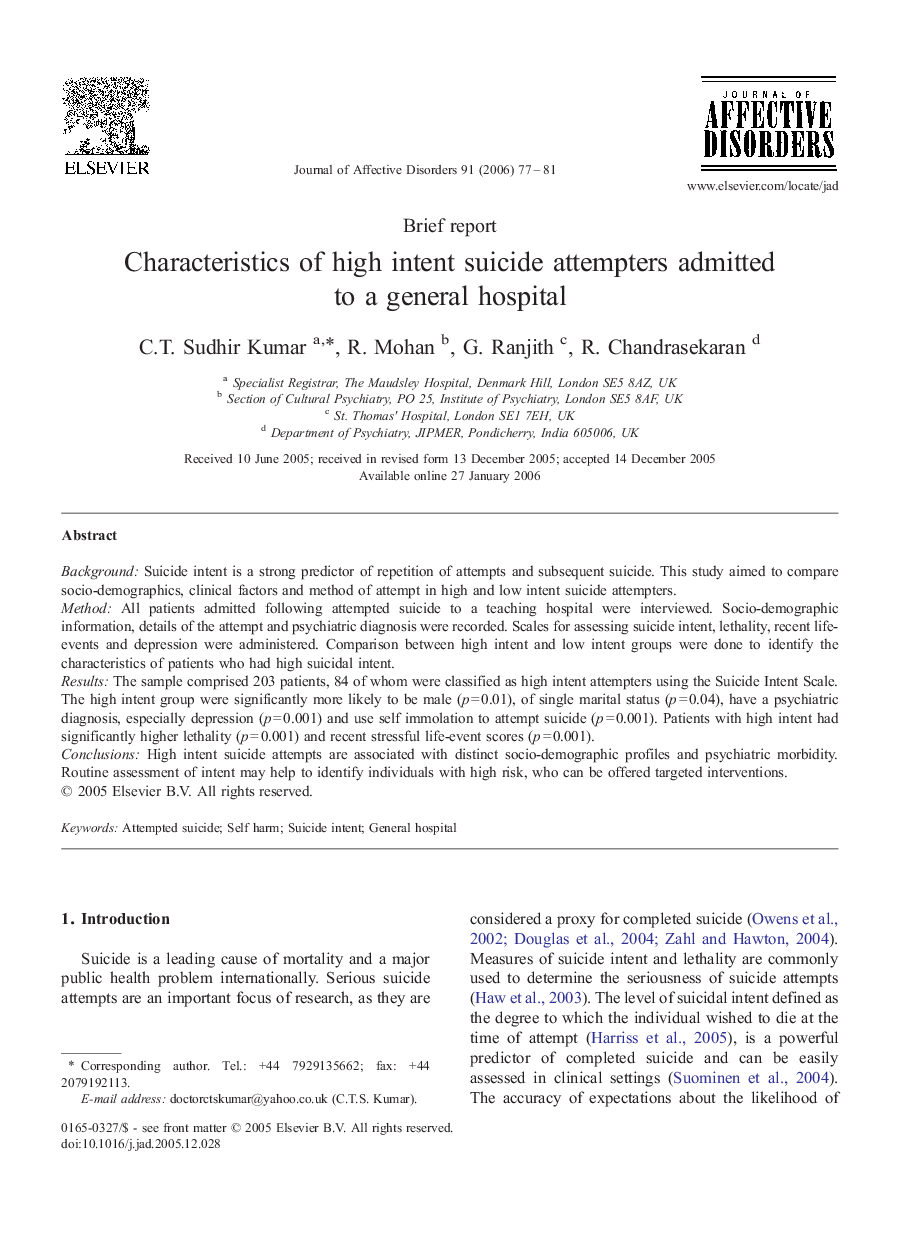| Article ID | Journal | Published Year | Pages | File Type |
|---|---|---|---|---|
| 4188070 | Journal of Affective Disorders | 2006 | 5 Pages |
BackgroundSuicide intent is a strong predictor of repetition of attempts and subsequent suicide. This study aimed to compare socio-demographics, clinical factors and method of attempt in high and low intent suicide attempters.MethodAll patients admitted following attempted suicide to a teaching hospital were interviewed. Socio-demographic information, details of the attempt and psychiatric diagnosis were recorded. Scales for assessing suicide intent, lethality, recent life-events and depression were administered. Comparison between high intent and low intent groups were done to identify the characteristics of patients who had high suicidal intent.ResultsThe sample comprised 203 patients, 84 of whom were classified as high intent attempters using the Suicide Intent Scale. The high intent group were significantly more likely to be male (p = 0.01), of single marital status (p = 0.04), have a psychiatric diagnosis, especially depression (p = 0.001) and use self immolation to attempt suicide (p = 0.001). Patients with high intent had significantly higher lethality (p = 0.001) and recent stressful life-event scores (p = 0.001).ConclusionsHigh intent suicide attempts are associated with distinct socio-demographic profiles and psychiatric morbidity. Routine assessment of intent may help to identify individuals with high risk, who can be offered targeted interventions.
